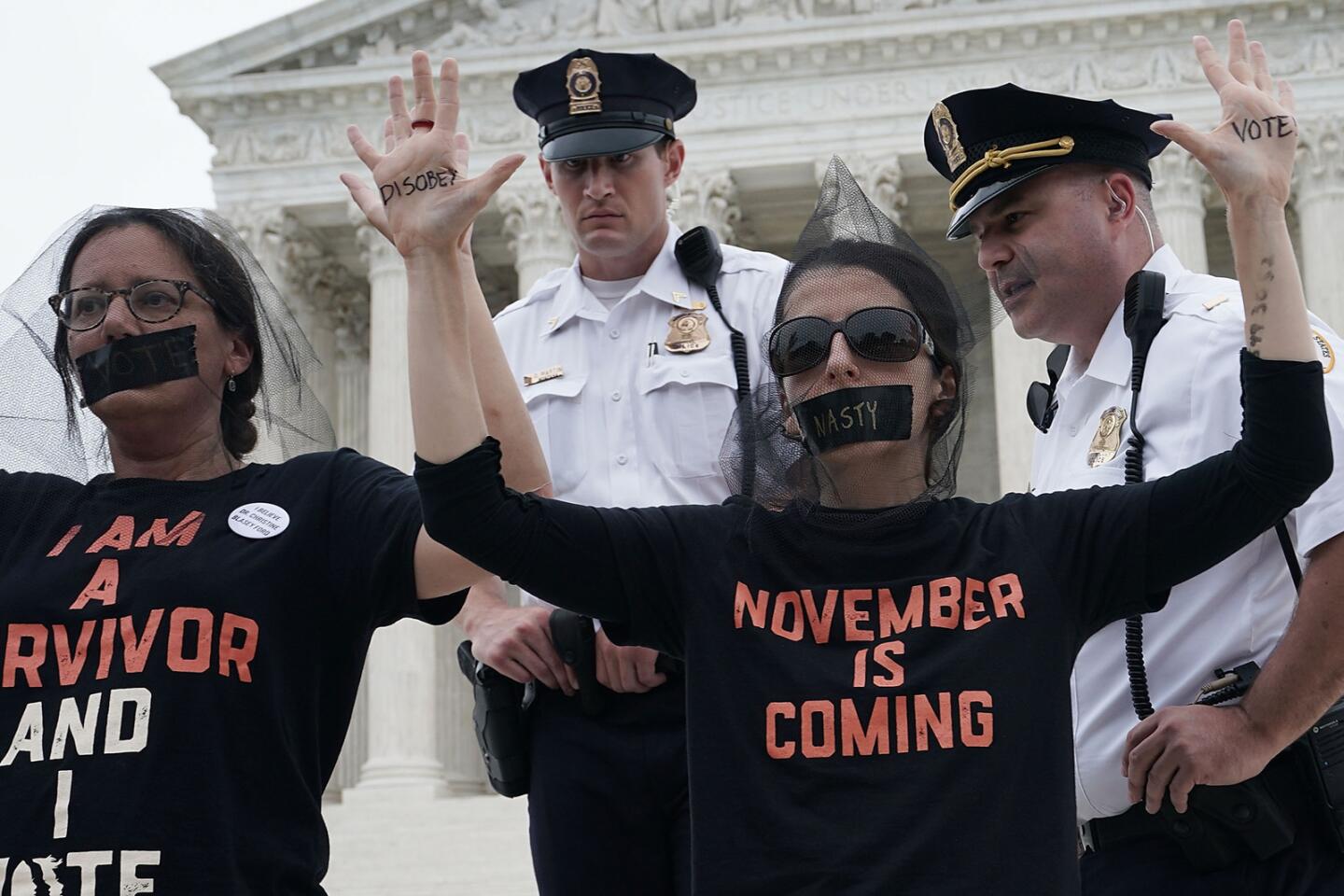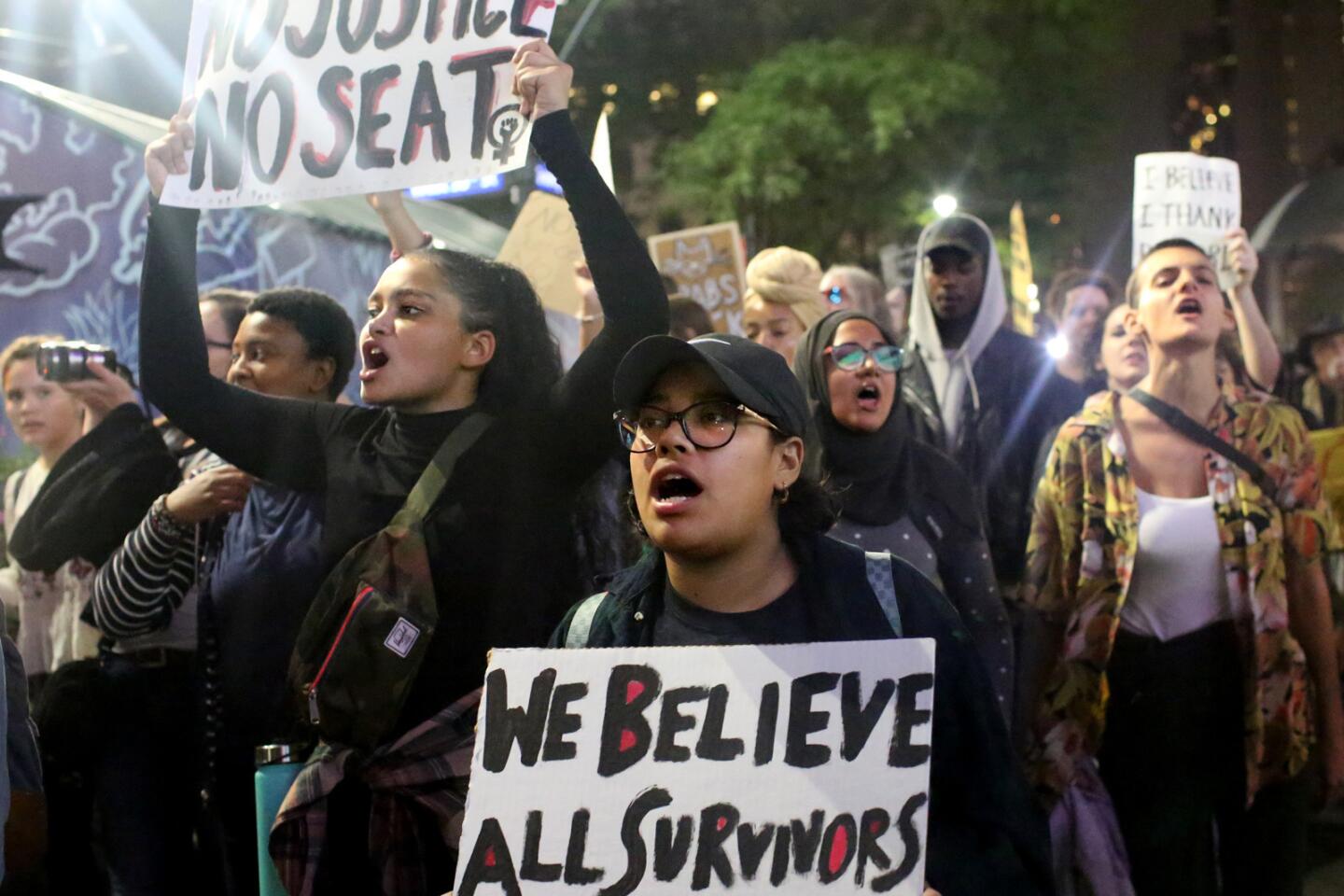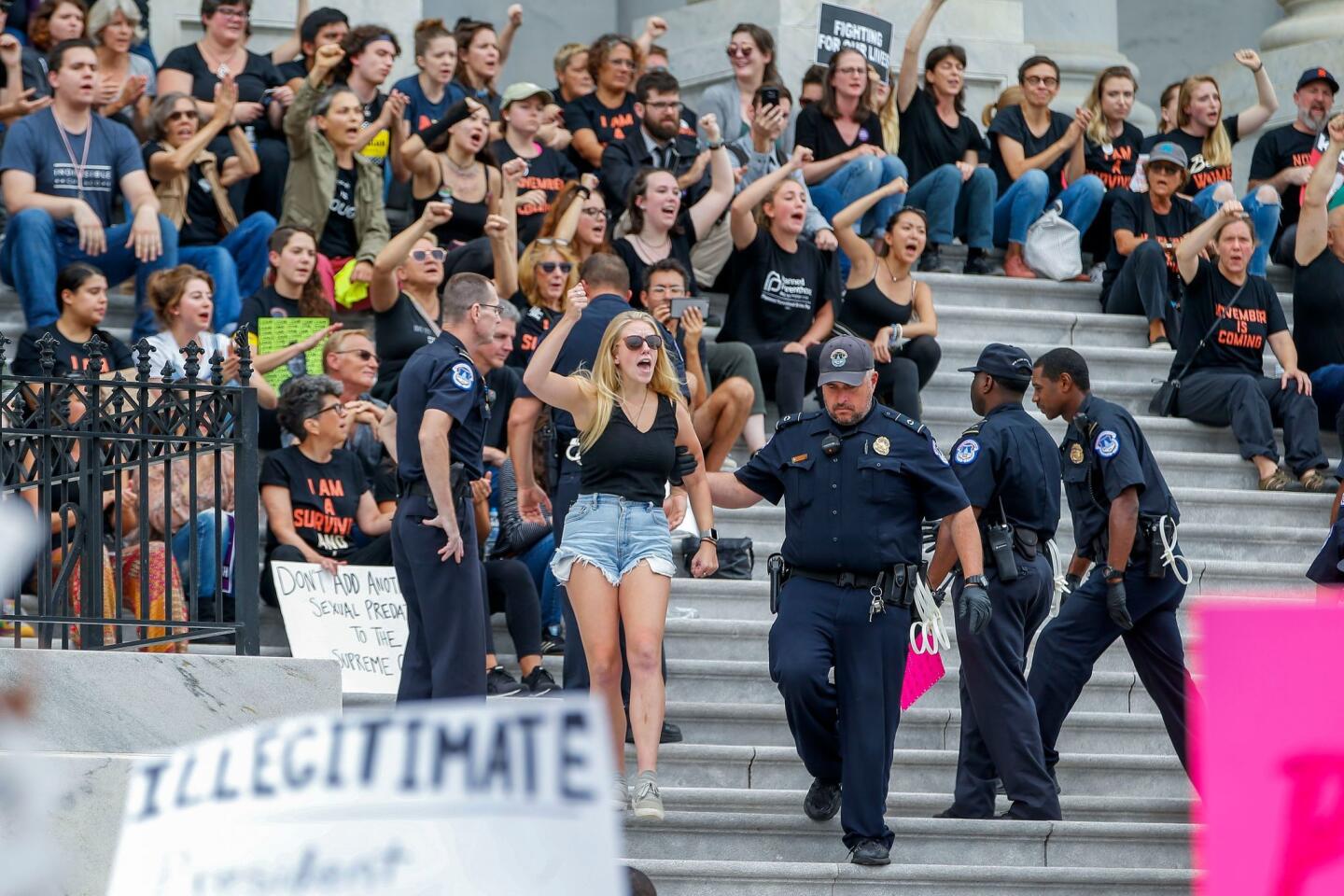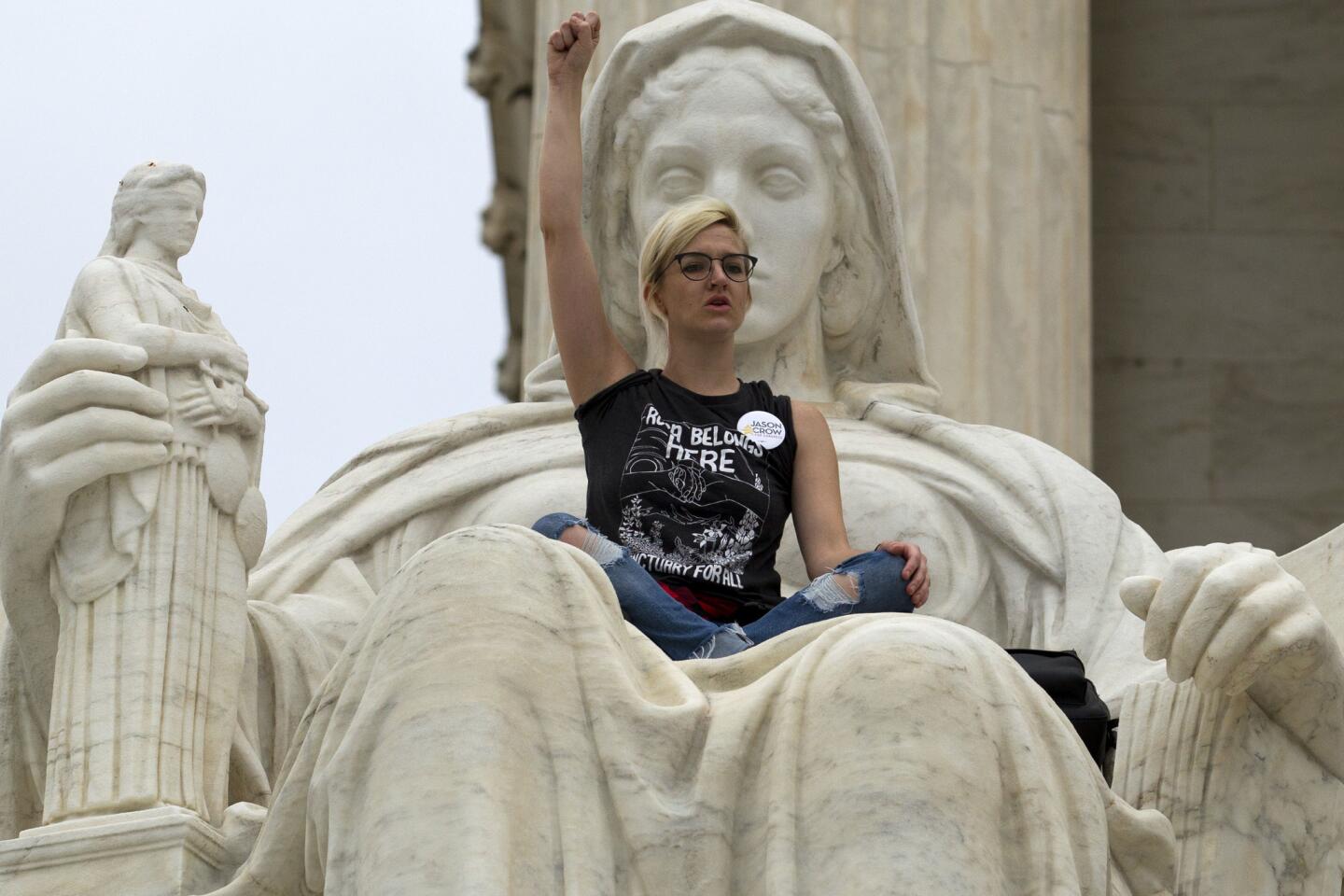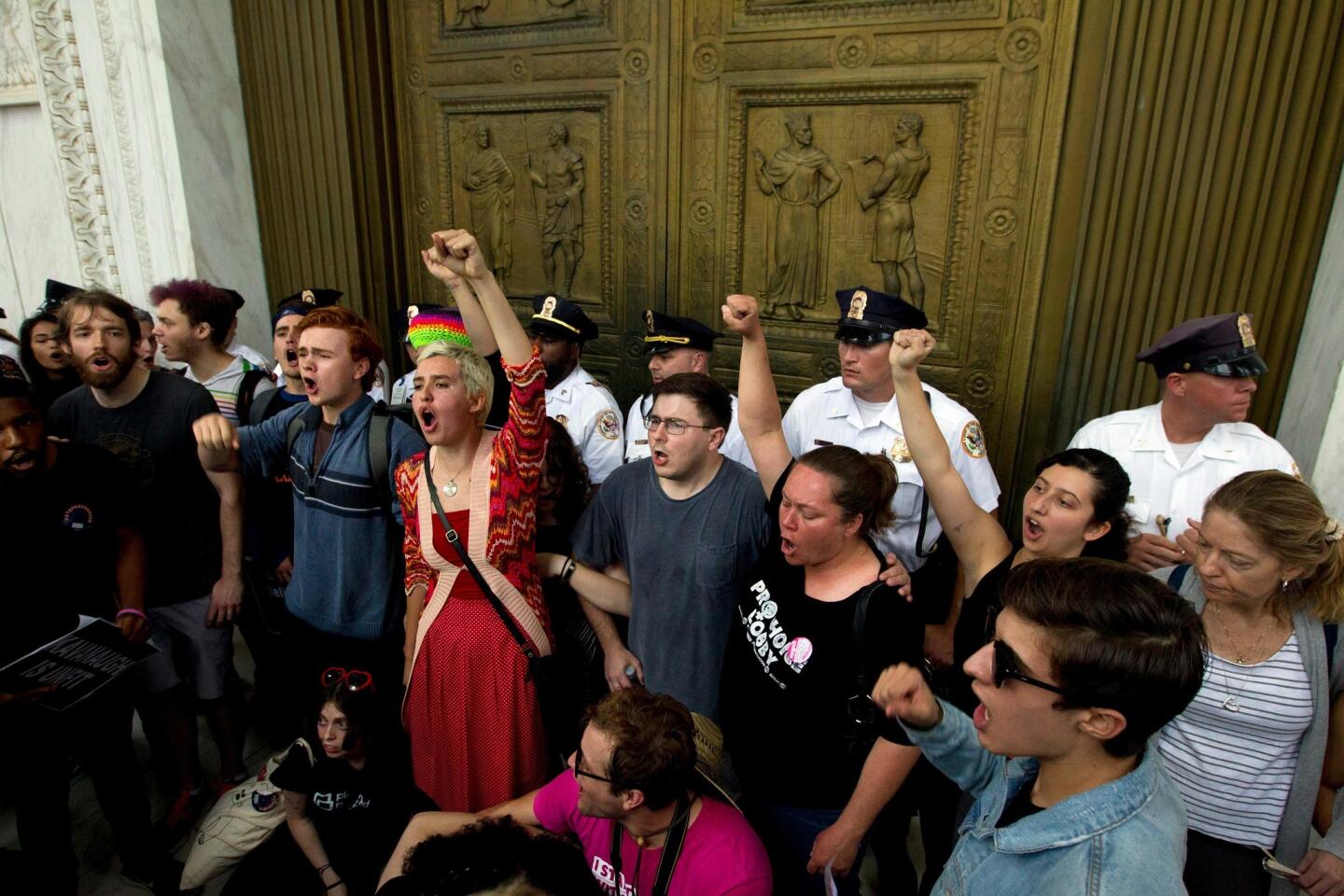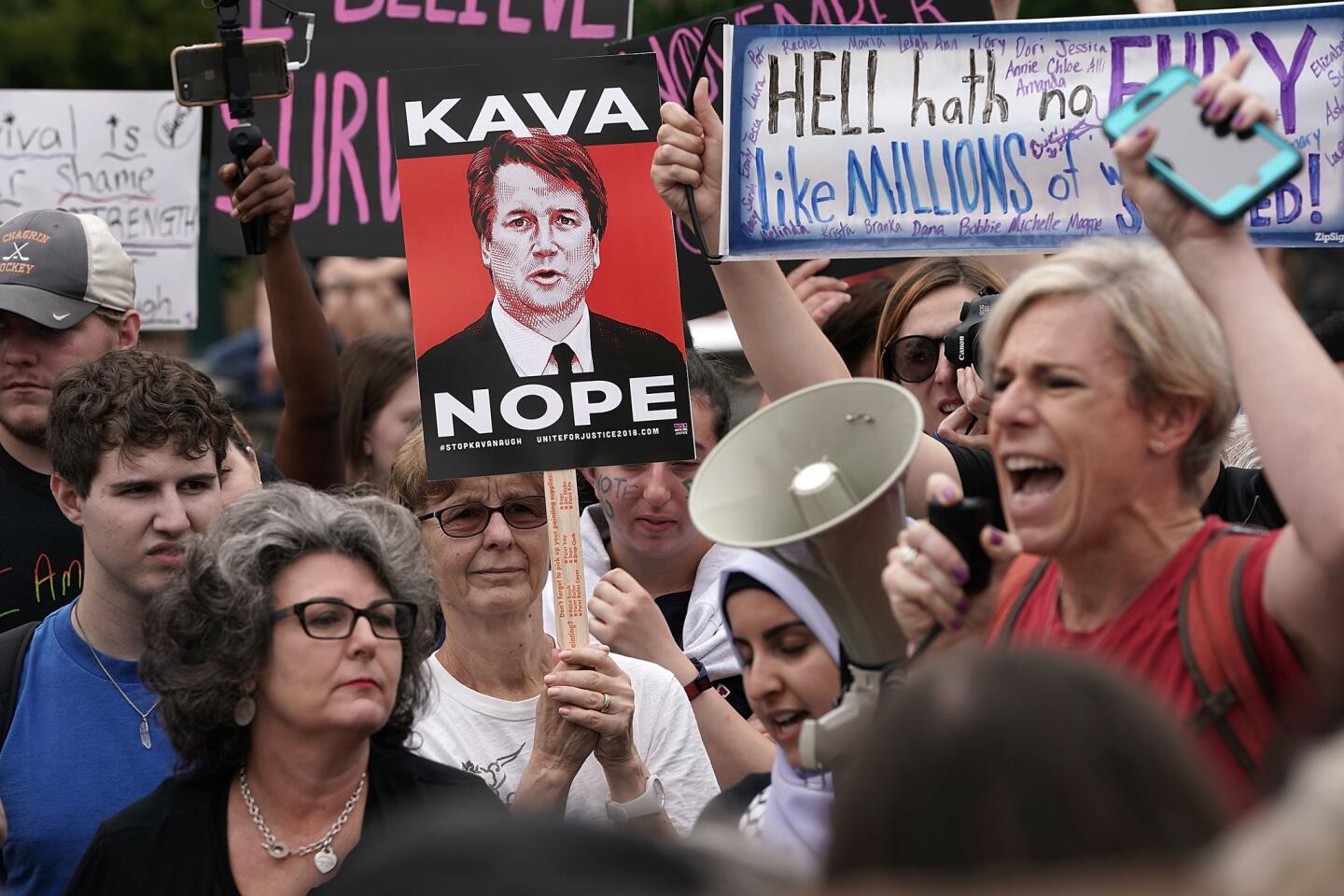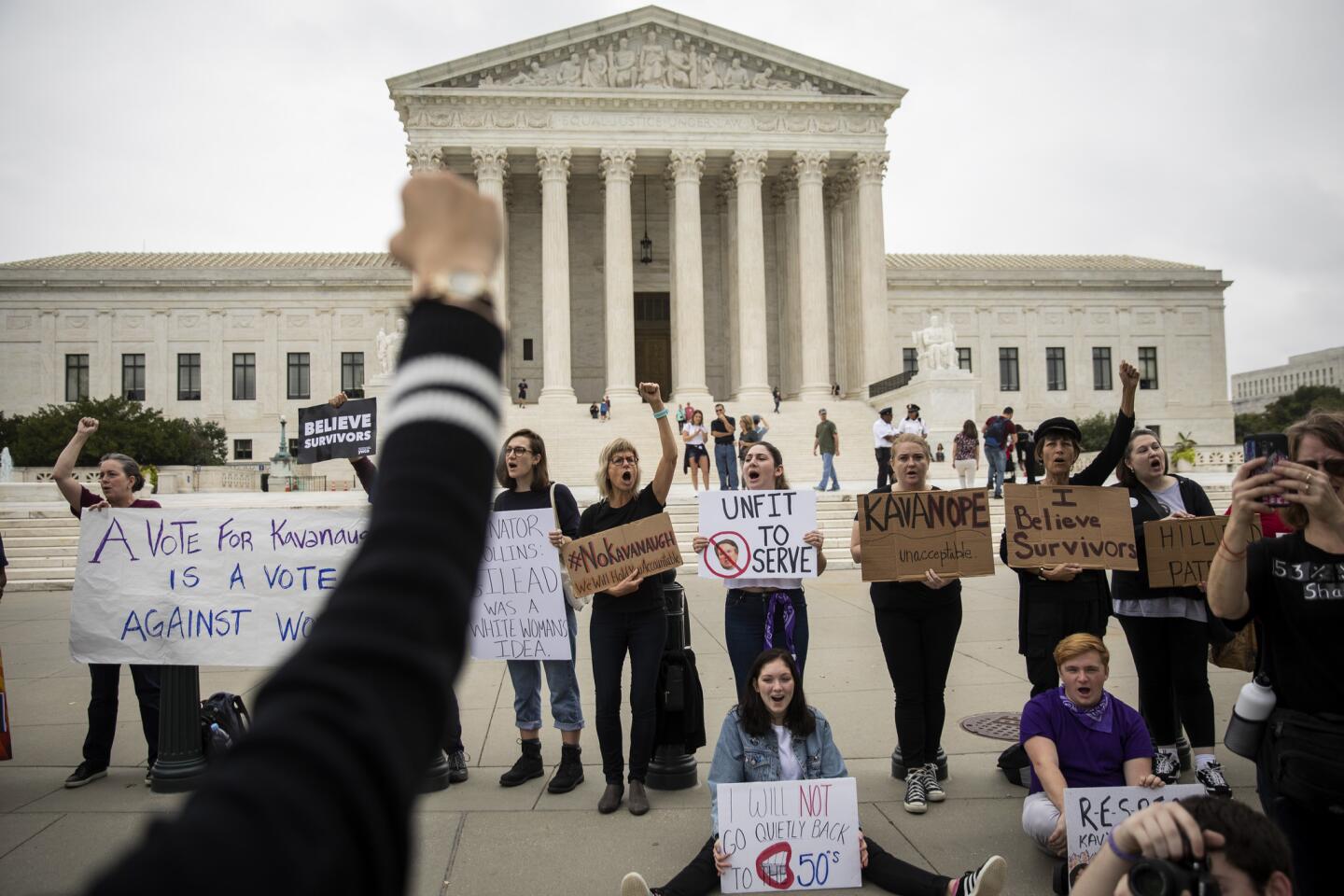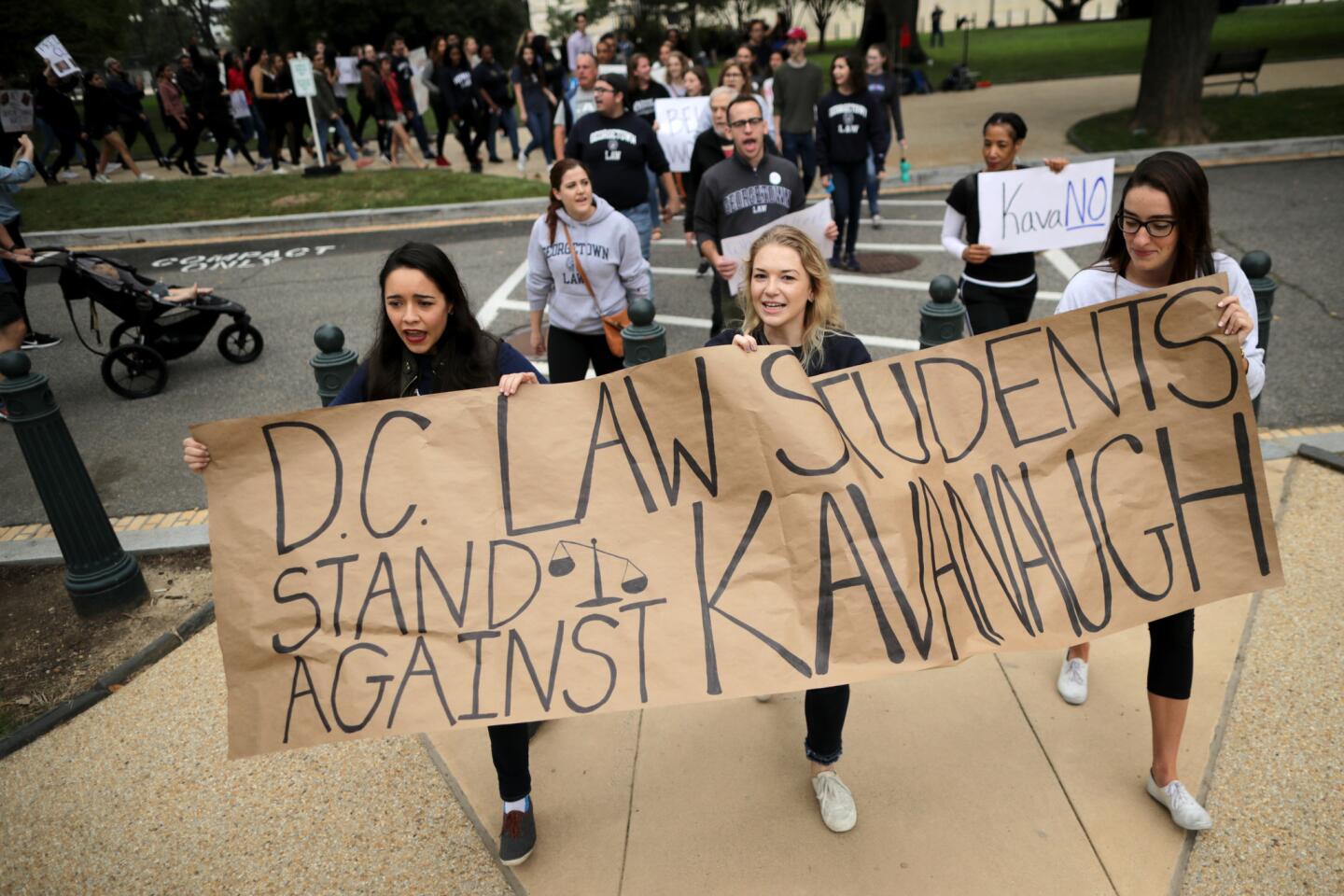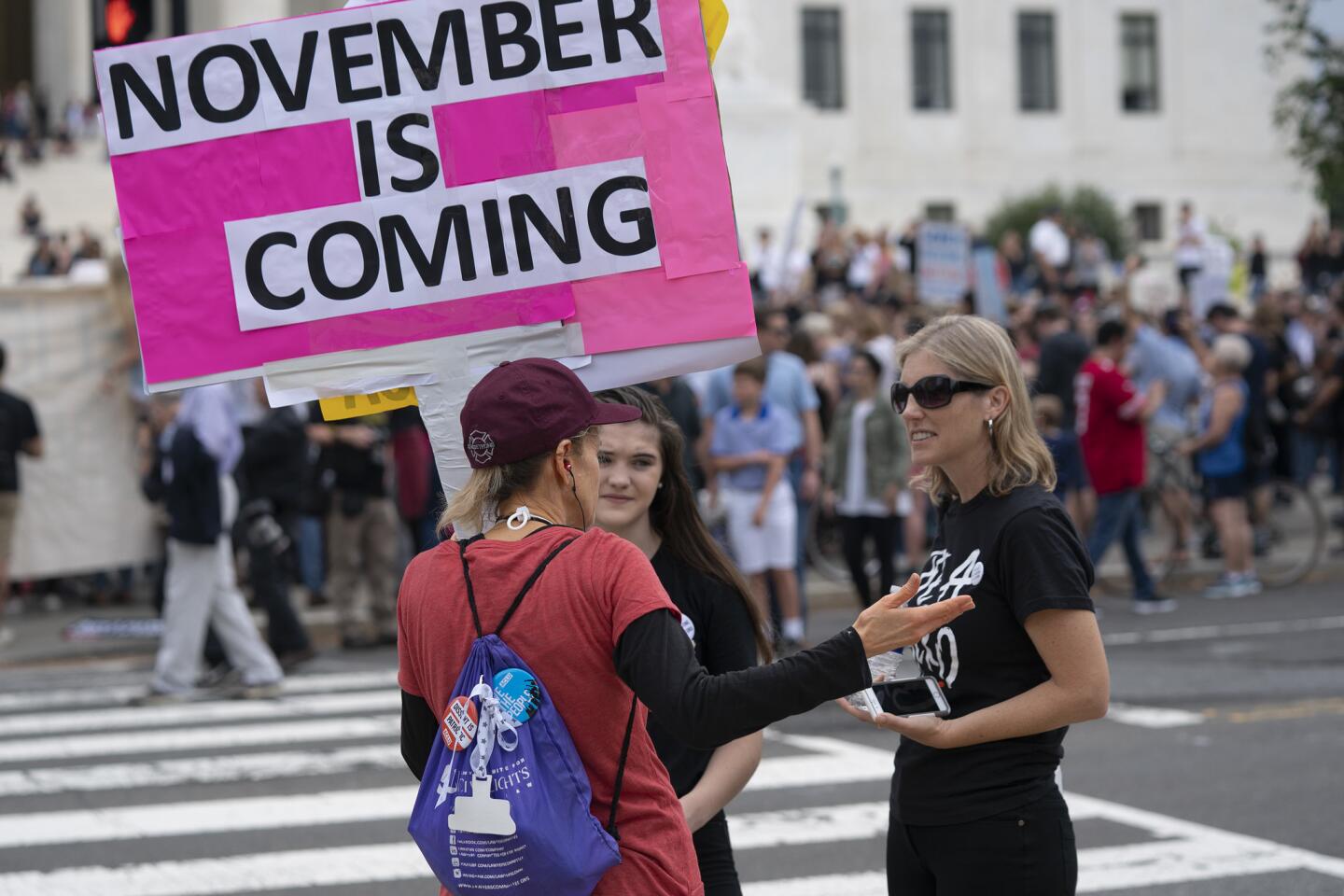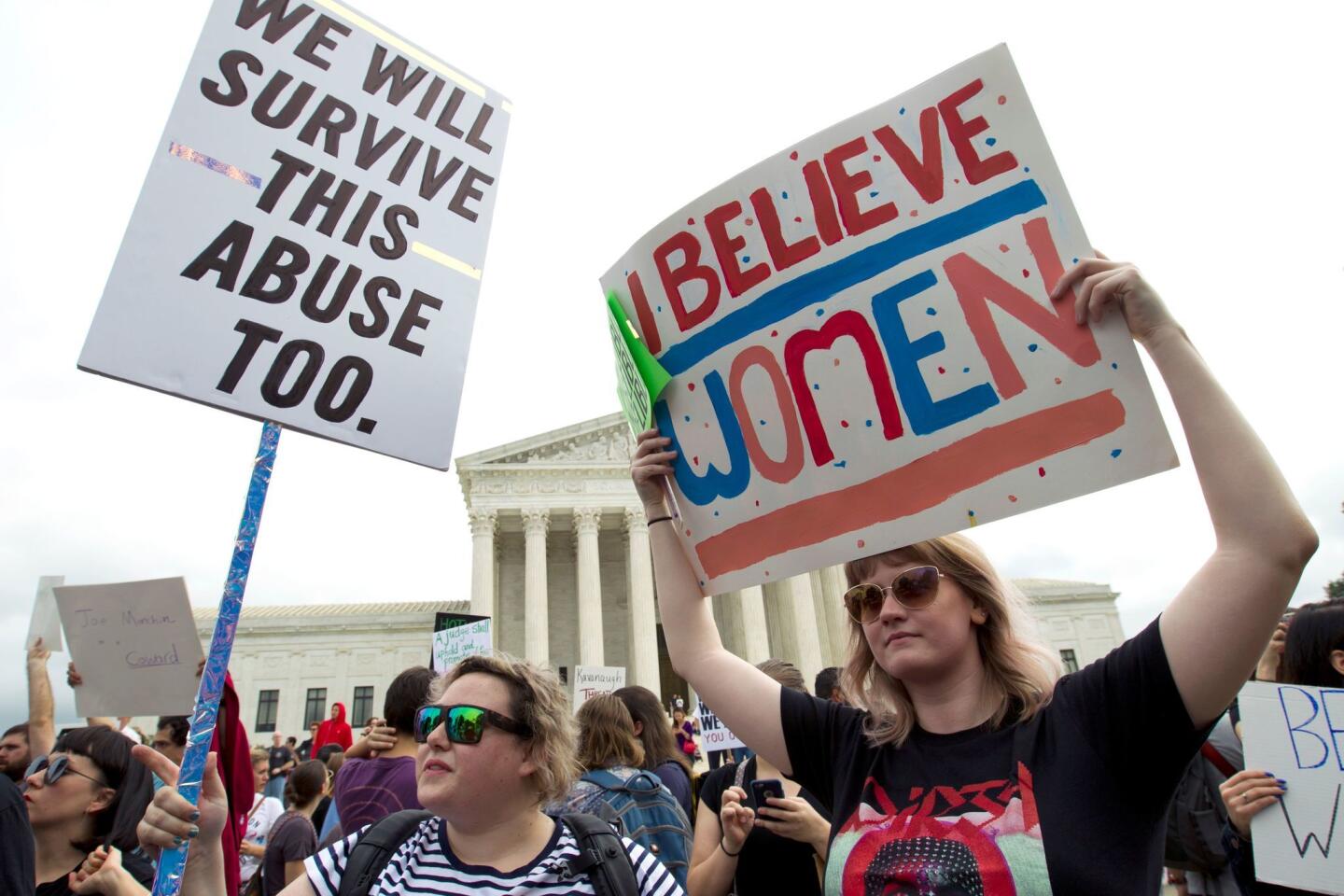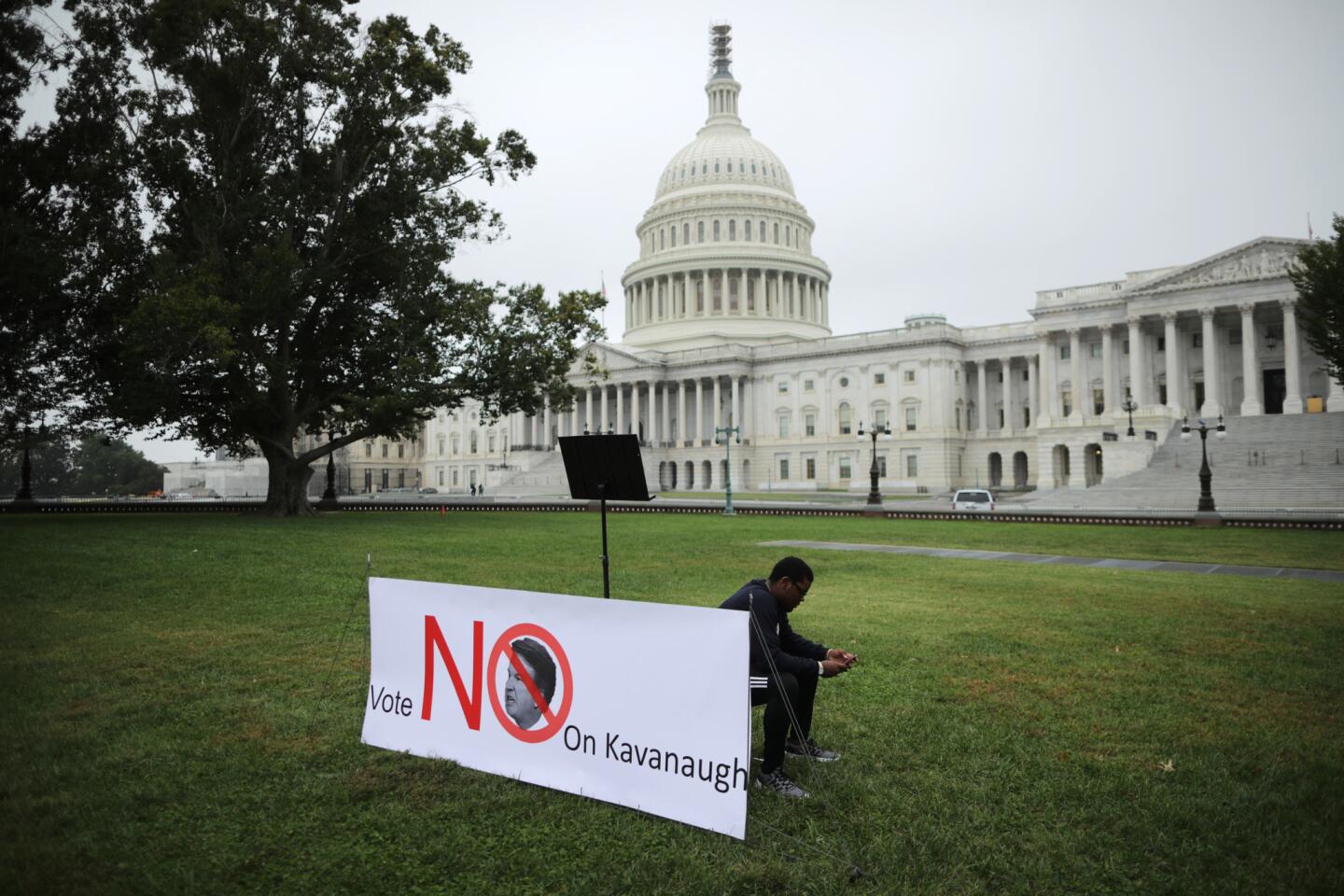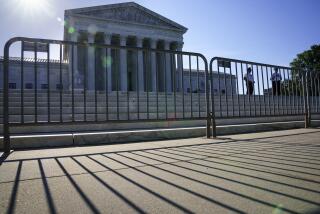Analysis:: Justice Kennedy sometimes sided with the Supreme Court’s four liberals. Don’t expect that from Kavanaugh
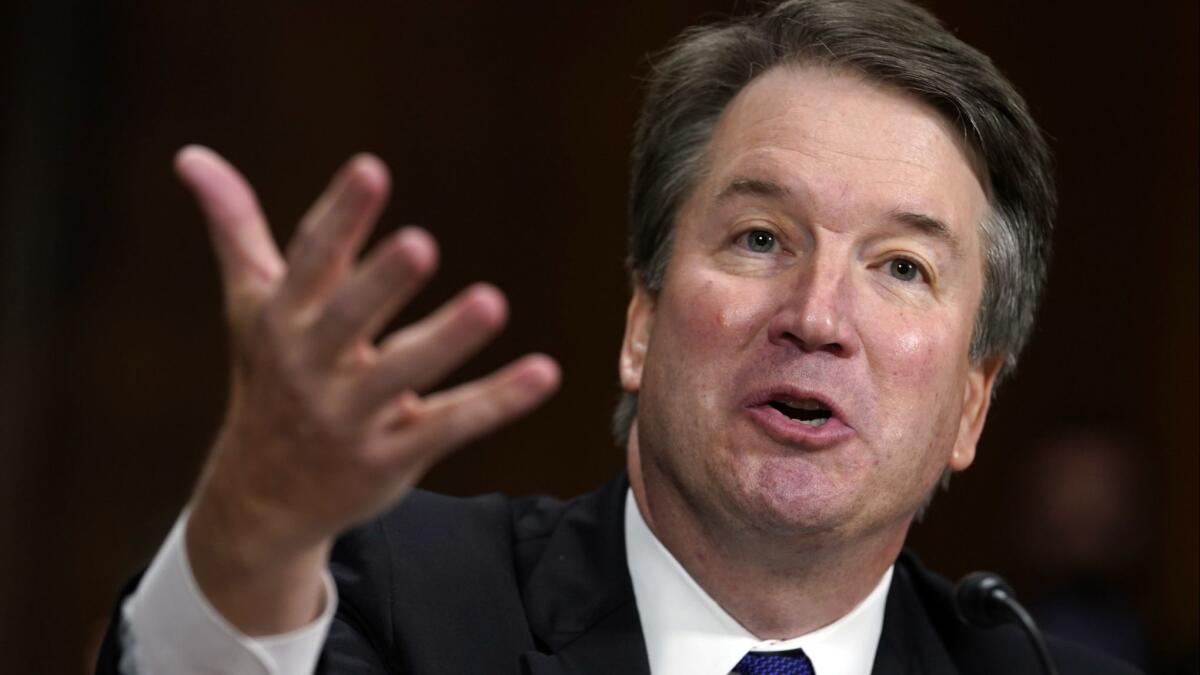
- Share via
Reporting from Washington — Republicans and Democrats sharply disagreed on whether Brett Kavanaugh should join the Supreme Court, but across party lines, most agreed on what his appointment means.
As a justice, Kavanaugh will almost surely create a significantly more conservative majority on the high court and shift the law to the right on a wide front — possibly affecting such issues as abortion, affirmative action, environmental protection, gun rights, immigration, property rights and religion.
That effect will be seen soon in small cases, such as a dispute the justices heard last Monday over the fate of a tiny endangered species of frog, as well as in larger constitutional conflicts about the limits of presidential power or the rights of individuals against the state.
The pace of change will depend largely on Chief Justice John G. Roberts Jr., who has talked about the importance of stability in the law and of preserving the perception that the court is not following a political agenda. His desire to avoid abrupt change could affect how quickly the court moves, but probably not its direction.
For the last 30 years, the court’s center has been defined by the views of two moderate Republicans: Justices Sandra Day O’Connor and Anthony M. Kennedy. They leaned to the right in cases involving business, crime, job discrimination or government power, but at times they sided with the court’s liberals.
Kennedy played the key role in recognizing gay rights, for example. And both were wary of pushing the law too far to the right. Most famously, they balked in 1992 when fellow conservatives tried to overturn the abortion right set forth in Roe vs. Wade.
In 2006, O’Connor retired and was replaced by a much more conservative jurist, Justice Samuel A. Alito Jr. Now, with the addition of Kavanaugh, the court will have five conservative Republican appointees and four liberal Democratic appointees — and no apparent swing vote. And the court may no longer have members who are inclined to cross the aisle on occasion.
In Kavanaugh’s years on the U.S. Court of Appeals for the District of Columbia Circuit, he regularly took the most conservative position on three-judge panels and often set out his views in lengthy dissents. He did not play the role of the moderate who tried to find a middle position in hard cases.
And if he was a staunch conservative at the time of his nomination in July, the fierce partisan fight over his confirmation may make it even less likely he will play a moderating role on the court.
Undoubtedly, there will be cases, as there are in most terms, on which the justices agree in unanimous rulings. Some veteran advocates expect the chief justice and his colleagues to try extra hard to reach agreement this term. But many of these consensus rulings arise in non-ideological areas such as patents, taxes, bankruptcy or legal procedures.
Kavanaugh joins a court on which the ideological divide is on display most days.
Last Monday, for example, the eight justices heard their first argument of the new term; at issue was the reach of the Endangered Species Act.
Seeking to protect a frog facing extinction in Mississippi, the U.S. Fish and Wildlife Service had deemed as “critical habitat” some nearby forestland in Louisiana with small ponds. Weyerhaeuser Co., which owned or leased some of the land, sued, arguing that the endangered frogs did not live there now and that the “critical habitat” designation had caused the value of its land to drop by $32 million.
The court’s liberals saw the environmental rule as reasonable. Justice Elena Kagan said the landowner was not required to do much, other than not cut down all the trees and drain the ponds. The conservatives saw an example of extreme over-regulation. Alito said that if the government wanted to control use of the land, it ought to pay the company for it.
Their comments suggested the justices would split 4 to 4 on the outcome. They may try to fashion a narrow, compromise ruling. Or they may opt to have the case re-argued in a few months so that Kavanaugh can cast the deciding vote.
On Wednesday, the court heard a case about a burial plot on a Pennsylvania farm, a seemingly small dispute that in reality could have a big effect in California and elsewhere.
Rose Knick sued after her township told her she must allow visitors to cross her land to see the burial site. With the help of the Pacific Legal Foundation, based in Sacramento, she took her case to federal court and argued that the local regulation violated her rights under the 5th Amendment, which says “private property [shall not] be taken for public use without just compensation.”
In the lower courts, to no one’s surprise, Knick lost. The Supreme Court had set a procedural rule in 1985 that said property owners must go first to state courts to challenge land-use rules and seek compensation. That rule barred Knick’s suit in federal court, but property rights advocates want the rule overturned.
On Wednesday, an attorney from Pacific Legal, joined by a top Trump administration lawyer, urged the justices to allow property owners to skip over the state courts and go directly to federal court. Several of the court’s conservatives have called for such a move. If they can form a majority with the addition of Kavanaugh, developers and property owners could go to federal court to challenge all manner of zoning and development restrictions.
In California, that would probably mean more challenges to the state’s rules on development in the coastal zone.
Kavanaugh’s arrival will probably also bolster the administration in its effort to fend off at least three significant legal challenges that are making their way to the high court.
One case involves the president’s decision to repeal the Obama-era order that shields so-called Dreamers — immigrants who were brought to the U.S. illegally as children — from deportation.
A second case challenges the Commerce Department’s decision to add a question on citizenship to the 2020 census, a move that California’s lawyers say could lead to an undercount of the population.
In the third case, lawyers for transgender members of the military, and other transgender people who want to enlist, are fighting the White House’s order to sharply restrict their ability to serve.
In all three cases, lower-court judges have blocked the administration, at least temporarily, and its lawyers are trying to get the cases before the Supreme Court in this term.
For many pro-business conservatives, the most talked-about issue on the agenda for a more conservative court is reining in the “administrative state” and the regulations that arise from federal agencies.
Progressives praise rules that protect the environment, consumers, workers and investors from corporations and Wall Street; conservatives complain about dense and costly rules that are handed down by unelected bureaucrats.
On the appeals court, Kavanaugh was a strong advocate for giving the president and judges more power to curb regulations.
For social conservatives, abortion and religious liberty remain the top issues. Within a year or so, the court is likely to face a decision on whether to overturn or scale back the right to abortion — the question on which O’Connor and Kennedy split with their more conservative colleagues.
In recent years, the justices dealt with several disputes over abortion. Those cases arose when Kennedy held the deciding vote. He made clear he would uphold limited regulation of the procedure, but not measures that blocked or outlawed abortions entirely.
Now, with Kavanaugh sitting as his replacement, antiabortion lawyers in conservative states will press to prohibit abortion. Those laws will almost surely be struck down by federal judges because they violate Roe vs. Wade.
But the eventual appeal would then head to the Supreme Court, forcing the chief justice and his colleagues to confront the issue that has rallied conservatives since the 1980s and helped elevate them to the high court.
Twitter: DavidGSavage
More to Read
Get the L.A. Times Politics newsletter
Deeply reported insights into legislation, politics and policy from Sacramento, Washington and beyond. In your inbox twice per week.
You may occasionally receive promotional content from the Los Angeles Times.
